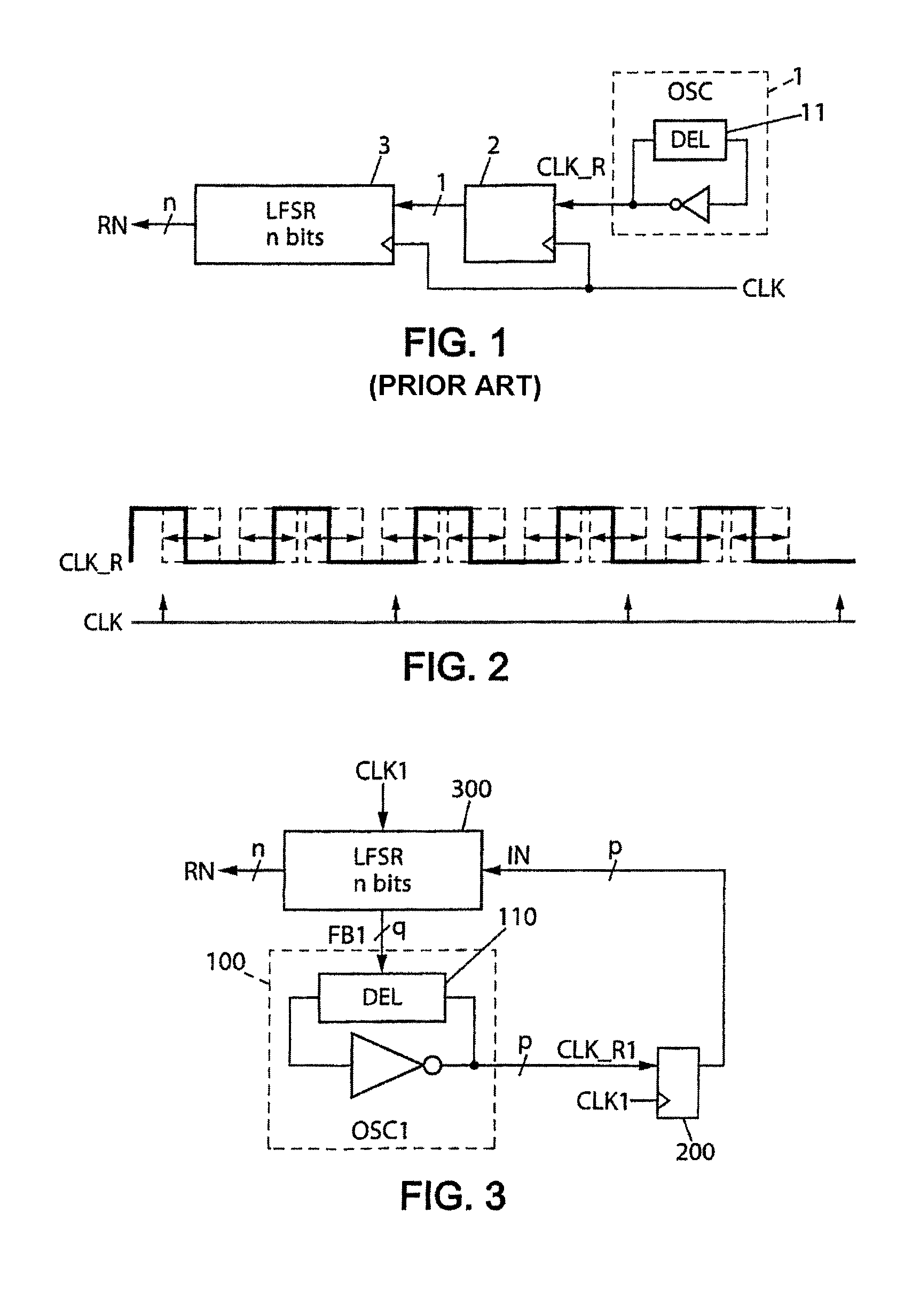Random number generator
a random number and generator technology, applied in the field of random number generation, can solve the problems of increasing the randomness of the generated numbers, increasing the power dissipation, and more complex structure, and achieving the effects of eliminating the deterministic nature of the sequence of numbers, reducing the number of randomness, and adding frequency noise in the oscillator
- Summary
- Abstract
- Description
- Claims
- Application Information
AI Technical Summary
Benefits of technology
Problems solved by technology
Method used
Image
Examples
Embodiment Construction
[0028]In what follows and in the Figures, the same elements bear identical references.
[0029]A pseudo-random number generator structure on which embodiments of the present invention are based, comprises an LFSR and an oscillator with an element introducing a determined delay.
[0030]With reference to FIG. 1, a conventional structure, shown for example in FIG. 6 of document U.S. Pat. No. 6,480,072 cited and discussed in the introduction, comprises a ring oscillator 1 whose output is looped with the input via a delay element 11. A ring oscillator is composed of a chain of an odd number (greater than unity) of inverter elements or stages, that is closed on itself. The delay element 11 is designed in such a manner that it introduces a delay that varies greatly as a function of the physical characteristics of the environment, especially but not solely the temperature of the circuit. It follows that the signal CLK_R delivered by the oscillator is unstable in phase, since it bears random phas...
PUM
 Login to View More
Login to View More Abstract
Description
Claims
Application Information
 Login to View More
Login to View More - R&D
- Intellectual Property
- Life Sciences
- Materials
- Tech Scout
- Unparalleled Data Quality
- Higher Quality Content
- 60% Fewer Hallucinations
Browse by: Latest US Patents, China's latest patents, Technical Efficacy Thesaurus, Application Domain, Technology Topic, Popular Technical Reports.
© 2025 PatSnap. All rights reserved.Legal|Privacy policy|Modern Slavery Act Transparency Statement|Sitemap|About US| Contact US: help@patsnap.com



